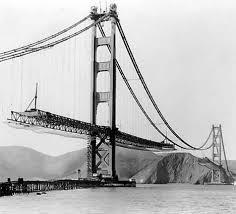-
Bridge Construction Planning
Bridge construction tends to involve huge projects that encompass the utilization of skills related to several engineering disciplines including geology, civil, electrical, mechanical, and computer sciences. Therefore, integrating the efforts of all involved must be meticulous. The initial plans are prepared regarding the project, including the characteristics of the desired bridge, the site details, and the requirement of resources. The bridge design will be determined by the type of bridge being constructed. The main types of the bridges are beam, arch, truss, cantilever, and suspension. The beam bridge is one of the popular types. Bridges can also be categorized by the planned use, like road and rail bridge, pedestrian pavement, material to be used like steel or concrete, and fixed or moveable. Moveable bridges are constructed when the ship height may be more than the bridge floor. In such situations, the road has the capability to be lifted or pivoted, to permit marine traffic movement under it. -
Bridge Foundation
Construction of the foundations is the first step toward building a bridge. This process involves detailed geotechnical investigations of the bridge site. The type of bridge foundation has to be selected, such as the well foundation, pile foundation, and the opened foundation. Each foundation is suitable for specific soil strata, and the desired bridge characteristics. The soilcharacteristics will determine the load bearing capacity, and other important parameters. The superstructure is basically designed in accordance with the technical requirements, aesthetic reasons, and the construction methodology. Excavation required for the foundations may need to be executed to sizeable depths, involving hard ground, before the solid rocks are reached. Engineering feats will be involved to avoid water, and prevent collapse of the diggings. Tunnels specifically may be subjected to sudden failures.
-
Bridge Construction Equipment
Heavy equipment will be used extensively during the bridge construction including bulldozers, excavators, asphalt mixers, formworks, and fabrication equipment. The construction and other equipment needs to be identified thoroughly, according to their capability and other desired functions. The foundation and the superstructure design will need to be considered. This expensive equipment shouldnot remain idle, and must be used cautiously to obtain optimum advantage.
Bridge Loads
Several loads act on a bridge, and the bridge is designed accordingly. Dynamic loads are particularly of prime significance. A bridge is designed to endure the normal vehicle loads, and other forces created due to winds and earthquakes. Several bridges havecollapsed due to high speed winds. Even if the wind speeds are reasonably low, the dynamic forces can become excessive for the bridge to resist. Initially, the bridge may vibrate violently, causing the bridge structure to fail at a few weak elements, or even damage the major components. Investigations conducted after bridge failures have revealed that the real forces on bridges that collapsed were significantly less compared to the loads for which the bridge was designed. However, the oscillations created due to the winds were enough to cause the failure. Therefore, special reinforcement may be necessary for prevention against high speed winds and earthquakes. Thus, lighter materials are used that are arranged in suitable geometric structures, and it is ensured that the configuration is aerodynamically stable.
Testing of Bridges
Since bridge construction is an expensive project, it is essential that all necessary tests may be conducted prior to the actual construction. These tests and investigations can reveal the bridge behavior under different dynamic loads. Computer aided designand testing are powerful tools that must be used to assist in the bridge design. Bridge design has benefited considerably due to the growth of computer programs. Such computer programs reveal immense information concerning the effect of different forces being applied on a bridge. Wind tunnels are being used extensively for the analysis of aircraft designs. Now these techniques are also being applied for bridge design examination. A wind tunnel is basically a space that is enclosed. Air at a fast speed is moved through the bridge model. Likely design and structural defects can be discovered by photography and study of the air movement pattern over the model.
https://youtu.be/o4eM0qoUhaE IN THIS LINK SHOWN VIDEO
Saturday, 12 September 2015
Bridge Counstruction Work
Subscribe to:
Post Comments (Atom)















No comments:
Post a Comment